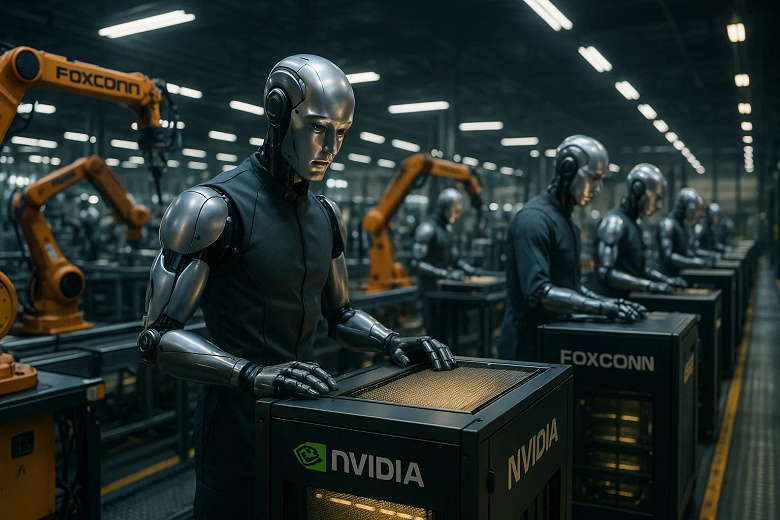Foxconn Technology Group, a leading name in global electronic manufacturing, has announced an ambitious plan to integrate humanoid robots into its server production line for Nvidia. This groundbreaking initiative is slated to begin within the next six months, as revealed by the company’s Chairman and CEO, Young Liu, confirming a pilot project launch in the United States.
Expanding Horizons in Robotics
Foxconn’s venture into humanoid robotics marks a significant shift in industrial automation trends. Historically recognized for its role in assembling devices for tech giants such as Apple, Nintendo, and Microsoft, Foxconn’s move towards incorporating humanoid robots aligns with the increasing demand for agile manufacturing solutions in the face of growing AI technology demands.
Strategic Collaboration with Nvidia
At the heart of this initiative is Foxconn’s collaboration with Nvidia to create a next-generation smart factory in Houston. The project aims to set a global benchmark for AI-driven factories, with the introduction of the Nvidia Isaac GR00T N humanoid model leading the charge in server assembly operations. This pilot factory promises to be a pioneering step in combining the capabilities of AI programming with humanoid robotics.
Technological and Economic Implications
The introduction of humanoid robots is poised to enhance production speeds, critical for meeting the escalating demands of the AI solutions market. However, the transition also brings questions about its impact on the current workforce. While Foxconn has extensive experience with industrial robots, the integration of humanoid counterparts represents a novel challenge involving the coexistence and collaboration between human and robotic workers.
With industries keenly observing, the rollout will potentially demonstrate how humanoid robots can perform complex tasks in real-world settings, particularly in environments where space is shared with human personnel. This initiative may eventually serve as a catalyst for broader adoption of smart factories globally.
Looking Ahead
Despite excitement surrounding this development, skepticism remains regarding the readiness of humanoid robots to independently handle the entire spectrum of assembly tasks. The marked timeline of six months suggests an initial pilot phase, aiming to mature into a comprehensive deployment as technologies evolve.
The success of Foxconn and Nvidia’s joint venture could herald a new era in manufacturing, showcasing the transition from traditional automation to versatile robotic systems within existing infrastructure. Should this project prove viable, it might redefine the standards for smart manufacturing facilities worldwide, blurring the lines between AI programming services and physical robotic operations.
As the narrative of industrial automation continues to unfold, the integration of humanoid robots into Foxconn’s production lines could spearhead a transformative shift in how manufacturing processes are envisioned and executed.

Illustration: Sora





